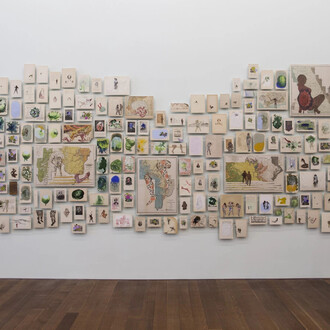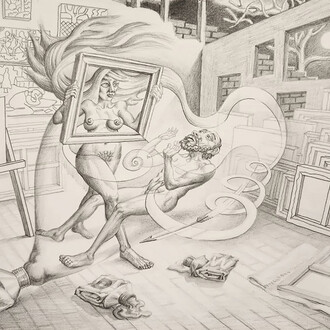Our lives are shaped by language: the signs we follow, the news we read, and the grammar of these forms all dictate how we experience the world. Direct Message: Art, Language, and Power focuses on the ways artists reveal patterns within communication, exploring how shared media platforms shape our lives. Proceeding from a belief in the power of language as the basis for our outlook and actions, the exhibition considers the ways artists rearrange and reconfigure communication structures as starting points for social critique and political inquiry.
Media- and language-based art, often considered to be separate strands of artistic practice, are brought together for this exhibition. This exhibition looks back to the ways artists used text in visual art beginning in the 1960s, providing a useful lens for understanding the ways language and media operate today. By inviting audiences to both read and look, artists and collectives such as Art & Language, Mel Bochner, and Charles Gaines emphasized the importance of grammar, structures, and systems as foundational for the representation of all forms. Their work informed subsequent generations of artists featured in this exhibition who conceal, annotate, and remix conventional modes of communication, challenging the standards that structure language and, by extension, power.
The exhibition is divided into four thematic sections exploring shared approaches and processes among intergenerational artists. The first section, Remove, explores the erasure of text from sources such as newspapers and the ways this gesture reveals new meanings and subtexts embedded in the original forms. Review presents a sampling of artists transforming historic materials such as television broadcasts and written narratives in order to uncover how the past continues to inform the present in subtle and unacknowledged ways. Reframe focuses on the ways artists appropriate a myriad of communication forms including logos, slogans, and other forms of public information as a means of turning a critical lens on these structures. Recode, the final section, considers the ways artists rearrange and reconfigure language and its symbols in order to uncover hidden information and difficult truths. The exhibition demonstrates the ways that artists across generations directly address the relationship between our shared language and a range of systemic issues—including censorship, surveillance, and state-sanctioned violence—while envisioning alternative possibilities.
















